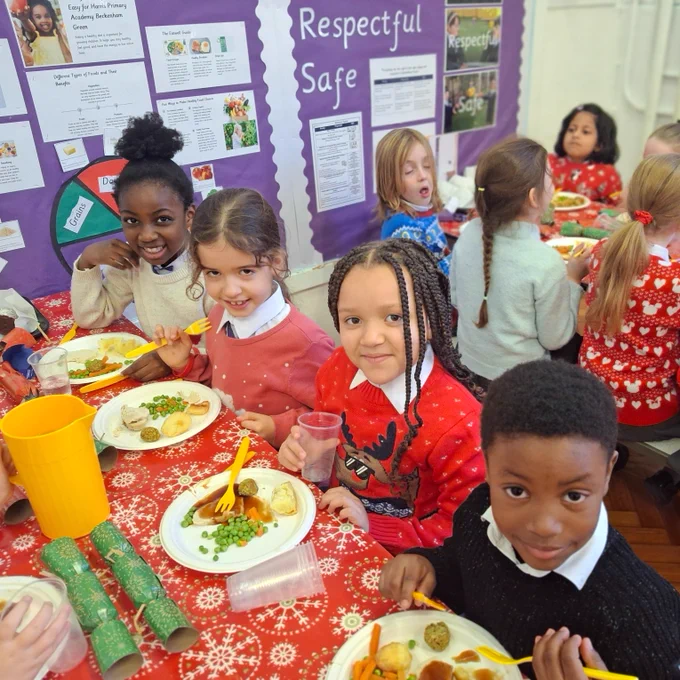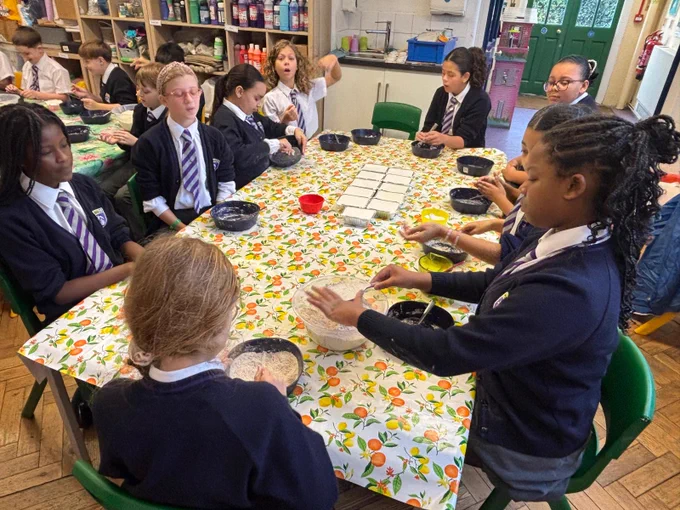Art & Design
“Art washes away from the soul the dust of everyday life.”
Pablo Picasso
Art is a diverse range of human activities in creating visual, auditory or performing artefacts, expressing the author's imaginative, conceptual ideas, or technical skill, intended to be appreciated for their beauty or emotional power.
An artist needs:
- Communication skills
- Imagination
- A critical eye
- Creativity
- Collaboration
To become effective artists, we will teach children about

Intent: Introduction, Vision and Philosophy
We understand that a high–quality art and design curriculum should engage, inspire and challenge pupils. The intent of the art and design curriculum is to develop human creativity by equipping students with the skills to experiment, invent, create and evaluate. To gain knowledge and an understanding of art and design the pupils will learn about art through history and through a range of cultural, enriching experiences.
Implementation: What does Art and Design look like? An overview:
We deliver a curriculum which teaches key knowledge in drawing, painting,collage, textiles, printing and sculpting by using materials and techniques. We also believe that by creating enriching experiences, during lessons and extra-curricular activities, the pupils are able to gain a love of the subject and understand the important links that art has in the world we live in
Helping pupils to create sketchbooks enables them to record their observations and use them to review and revisit ideas improve their mastery of art and design techniques. Key Stage 2 pupils are expected to practice techniques with increasing control and “think critically with developing a more rigorous understanding or art and design” (DfE 2013: 176). Within the sketchbook, pupils will be taught to evaluate and share opinions surrounding other great artists’ work. They will also need to give reasoning for decisions and draw influences from great artists, architects and designers in history.
The increased use of technology should also be considered when teaching art and design. Pupils will also have an understanding of digital art and how digital and physical art are interlinked.
Art Year Overview
|
|
Year 1 |
Year 2 |
Year 3 |
Year 4 |
Year 5 |
Year 6 |
|
Aut 1 |
Drawing: The use of line Line Drawing (mixed media) Mark-Making techniques (mixed media)
Artist(s): Pablo Picasso
Oliver Jeffers |
Drawing: Broken lines to create texture Mark-Making to create visual texture and tone
Artist(s): Olga Gamynina Bryan Organ |
Drawing: Line drawings Sgraffito (Line-drawing using a different medium)
Artist(s): Karla Gerard Gustav Klimt |
Drawing: Shading and hatching Observational drawing Creating Tone
Artist(s): Paul Cezanne
Leonardo Da Vinci |
Drawing: Vanishing points Perspective Drawing
Artist(s): Filippo Brunelleschi Vincent Van Gogh |
Drawing: Perspective Observational drawing Landscape, cityscape and portrait
Artist(s): Ben Shahn
Stephen Wiltshire |
|
Aut 2 |
Collage: Collage techniques Creating texture with paper
Artist(s): Eric Carle |
Collage: Use of natural materials in collage Cutting, arranging and sorting
Artist(s): Andy Goldsworthy |
Collage: Kinetic collage Arranging pieces to show movement
Artist(s): Alexander Calder Henri Matisse |
Collage: Surrealist images using juxtaposition
Artist(s): Jiri Kolar Man Ray |
Collage: Surreal collage exploring juxtaposing images and proportion Representing topical issues of concern
Artist(s): Sarah Eisenlohr |
Collage: Mixed Media Collage and expression of meaning
Artist(s): Deborah Roberts Romare Bearden |
|
Spr 1 |
Painting: Primary colours Painting within line boundaries / block colours
Artist(s): Piet Mondrian |
Painting: Mixing colours to recreate observed colours (secondary colours) Smooth brush strokes
Artist(s): Georgia O’Keefe |
Painting: Different hues of colours Use of colour to have impact Visible brush stroke
Artist(s): Vincent Van Gogh |
Painting: Creating tone with paint; light and shade Creating 3D effect Composition in painting
Artist(s): Giorgio Morandi |
Painting: Mixing colours to create tertiary colours to match observed colours
Artist(s): Alex Katz |
Painting: Watercolours
Artist(s): Paul Cezanne |
|
Spr 2 |
Printing: Using a range of organic and geometric shapes to print in a variety of colours and shapes
Artist(s): Sonia Delauney Bernice Sydney |
Printing: Using a range of tools to create a monoprint
Artist(s): Henri Matisse |
Printing: Using a range of tools using the collagraph printing technique
Artist(s): Paul Klee |
Printing: Creating radial symmetry by repeating and rotating an identical image Relief and rotational prints
Artist(s): Diogo Machado |
Printing: Using relief and overlay techniques to create negative and positive spaces
Artist(s): Erik Heckel Edvard Munch |
Printing: Using stencilling to create silk printing images
Artist(s): Blek le Rat Y6C215 Banksy |
|
Sum 1 |
Sculpture: Pinch pots using clay
Artist(s): Kathy Jeffers |
Sculpture: 3D structures combining different materials (card)
Artist(s): Joan Miro |
Sculpture: Coil clay pots
Artist(s): Louise Goodman |
Sculpture: Wire sculptures Building on wire sculptures
Artist(s): Louise Bourgeois Nikki De Saint Phalle |
Sculpture: Manipulating clay Hollow sculpture (with negative space)
Artist(s): Anish Kapoor Henry Moore |
Sculpture: Soap sculptures Free-standing carboard sculptures using all modelling, casting, carving and construction techniques
Artist(s): Naum Gabo Barbara Hepworth |
|
Sum2 |
Textiles: Simple weaving skills
Artist(s): Anni Albers |
Textiles: Developing weaving skills around a loom
Artist(s): Ghananian Kente Cloth Weaving |
Textiles: Developing weaving skills to create shapes with wool on a loom
Artist(s): Lisa Walton Judith Content |
Textiles: Batik and how to create images and patterns using wax resist
Artist(s): Chuah Thean Teng Kampung Batik |
Textiles: Applique techniques to join fabric pieces together
Artist(s): Rita Smith Panamanian Mola Art |
Textiles: Embroidery techniques to add embellishments to applique and batik designs
Artist(s): Bisa Butler James Fox |
Impact: Evidence and assessment
The Art and Design curriculum aims to excite pupils and ignite their enthusiasm in the world around them. Judging the impact of art has always been a topic of debate. A large differentiation in perspective and opinion of artwork makes it difficult to define and therefore, assess pupils’ learning.
Within art education pupils should be encouraged to express difference in opinion which contrasts with fixed assessment criteria. Continuous formative assessment within art is important to view the processes that a child goes through when creating artwork.
The skills and techniques that the pupils learn will impact the learning environments in and around the academy. Pupils will be encouraged to take influences from their surroundings and improve the aesthetics of their local community by exhibiting artwork linked to all areas of the curriculum and beyond.
Subject leaders will conduct learning walks and pupil interviews to measure the impact of our teaching, based on how much children can remember.
Subject leaders will meet with their counterparts from our other cluster schools throughout the year and will moderate the planning, work and monitoring outcomes from their setting to ensure that standards are exceeding the expectations of the National Curriculum.






















